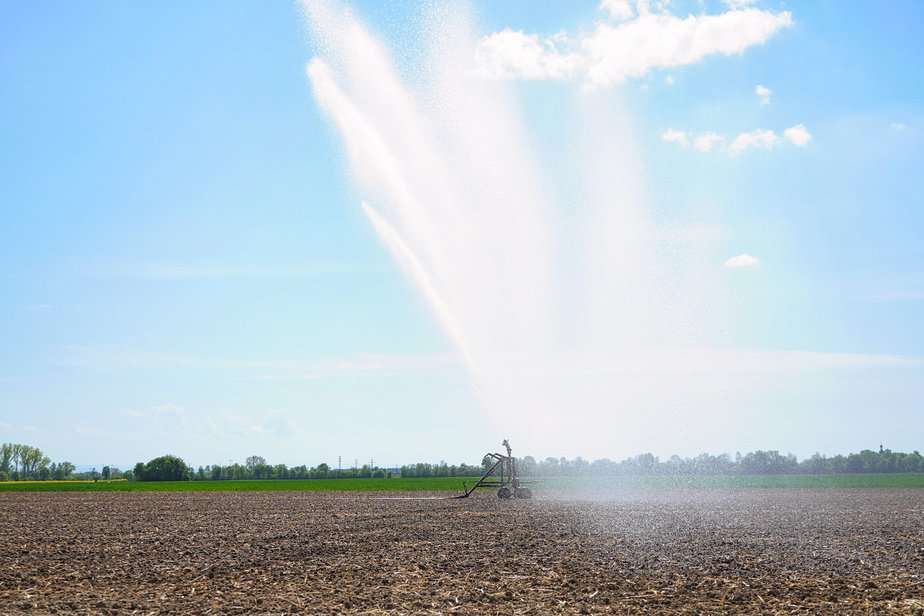
The factors contributing to a lack of rainfall are multifaceted and interconnected.
Rainfall is a vital component of Earth’s natural water cycle and plays a crucial role in supporting life, agriculture, and ecosystems. However, in various parts of the world, there are periods when rainfall becomes scarce, leading to droughts and water shortages. In this article, we look at the complex factors that can cause a lack of rainfall, shedding light on the meteorological, geographical, and environmental aspects of this phenomenon.
Atmospheric Circulation Patterns
One of the primary factors influencing rainfall patterns is the Earth’s atmospheric circulation. The movement of air masses and pressure systems across the globe dictates where moist air rises and condenses, ultimately resulting in precipitation. Regions along the equator, such as the tropical rainforests, experience consistent rainfall due to the convergence of warm, moist air masses.
Conversely, areas like deserts, which are situated along the subtropical high-pressure zones, often suffer from a lack of rainfall. High-pressure systems suppress air uplift, preventing the condensation necessary for rain formation. Understanding these atmospheric circulation patterns helps explain why certain regions receive little to no rainfall.
Orographic Lift
Orographic lift is another essential factor that influences rainfall distribution. Moist air is driven upward when it comes into contact with a mountain range, and rainfall is caused by the rising air’s cooling and condensation. On the other hand, the leeward side—also known as the rain shadow region—sees a considerable decrease in precipitation.
The phenomenon of orographic lift is why areas like the Pacific Northwest in the United States receive abundant rainfall on the western side of the Cascades while regions east of the mountains, such as eastern Washington, remain relatively dry.
Proximity to Water Bodies
The proximity of an area to large bodies of water, such as oceans and seas, significantly affects its rainfall patterns. Water bodies act as heat reservoirs, moderating temperature fluctuations. Consequently, regions near coastlines tend to experience more consistent and evenly distributed rainfall compared to inland areas.
The presence of water bodies provides a continuous source of moisture to the atmosphere, promoting the formation of clouds and rainfall. In contrast, inland regions, especially those located far from significant water sources, are more susceptible to droughts and a lack of rainfall.
Climate Change and Weather Variability
Climate change is altering global weather patterns, leading to increased weather variability and extreme events, including droughts. Rising temperatures can exacerbate evaporation rates, drying out soil and vegetation. Long-lasting dry spells can also result from changes in atmospheric circulation patterns, which can upset conventional rainfall patterns.
Human-induced climate change, driven by factors such as greenhouse gas emissions, deforestation, and land-use changes, has the potential to intensify drought conditions in various regions, posing serious challenges for water resources and ecosystems.
El Niño and La Niña Events
El Niño and La Niña are climate phenomena associated with the periodic warming and cooling of sea temperatures in the Pacific Ocean. These events have far-reaching effects on global weather patterns.
During El Niño events, which occur irregularly every 2-7 years, warm ocean temperatures can disrupt typical atmospheric circulation patterns, leading to shifts in rainfall distribution. Some regions experience higher than normal rainfall, while others face long droughts. Conversely, La Niña events tend to be associated with increased rainfall in specific areas and more arid conditions elsewhere.
Urban Heat Island Effect
Urban areas with extensive infrastructure, concrete, and asphalt can create localized climatic changes known as urban heat islands. These areas often experience higher temperatures than their rural surroundings. The heat generated by buildings and human activities can influence local weather patterns, potentially reducing rainfall in urban centers.
The urban heat island effect can exacerbate drought conditions by altering temperature and humidity levels in the atmosphere. This phenomenon underscores the importance of sustainable urban planning and green infrastructure to mitigate its impacts.
Deforestation and Land Use Changes
Human activities can significantly impact local and regional rainfall patterns. Forests play a crucial role in maintaining the water cycle by transpiring moisture into the atmosphere, which can lead to cloud formation and rainfall. Deforestation for urbanisation, agriculture, and other reasons reduces this vital supply of moisture.
Deforestation can disrupt local rainfall patterns and contribute to a drier climate in affected areas. It also leads to soil erosion and reduced groundwater recharge, further exacerbating water scarcity issues.
Conclusion
Understanding these complex interactions between atmospheric circulation, geographical features, climate change, and human activities is crucial for managing the impacts of droughts and water shortages. By addressing these challenges through sustainable practices and global cooperation, we can work towards ensuring a more reliable and equitable distribution of rainfall in a changing world.
More reading
Solving Low Rainfall: Strategies for Water Scarcity Mitigation

Pingback: Effect Of Climate Change On Freshwater Ecosystems | Big Ditch Dam Building Company
Pingback: How Many Farm Dams Are There In Australia? | Big Ditch Dam Building Company
Pingback: The Role Of Farm Dams In Drought Resilience | Big Ditch Dam Building Company
Pingback: NSW Drought Is Broken By Recent Rainfall | Big Ditch Dam Building Company
Pingback: How To Prevent Dam Siltation: Strategies And Solutions | Big Ditch Dam Building Company
Pingback: Understanding The Water Requirements For Farm Dam Construction | Big Ditch Dam Building Company
Pingback: Australian Dam Levels Decline Amid Surging Water Usage | Big Ditch Dam Building Company
Pingback: Assessing The Hydrological Conditions For Farm Dam Construction | Big Ditch Dam Building Company
Pingback: How Dams Reduce The Impact Of Floods And Fires | Big Ditch Dam Building Company
Pingback: Farm Dam Maintenance: Essential Practices For Longevity | Big Ditch Dam Building Company
Pingback: Farm Dam Construction In Rocky Terrain | Big Ditch Dam Building Company
Pingback: 10 Strategies For Adapting Dam Design For Climate Change | Big Ditch Dam Building Company
Pingback: Sydney Should Prepare For Future Water Shortages | Big Ditch Dam Building Company